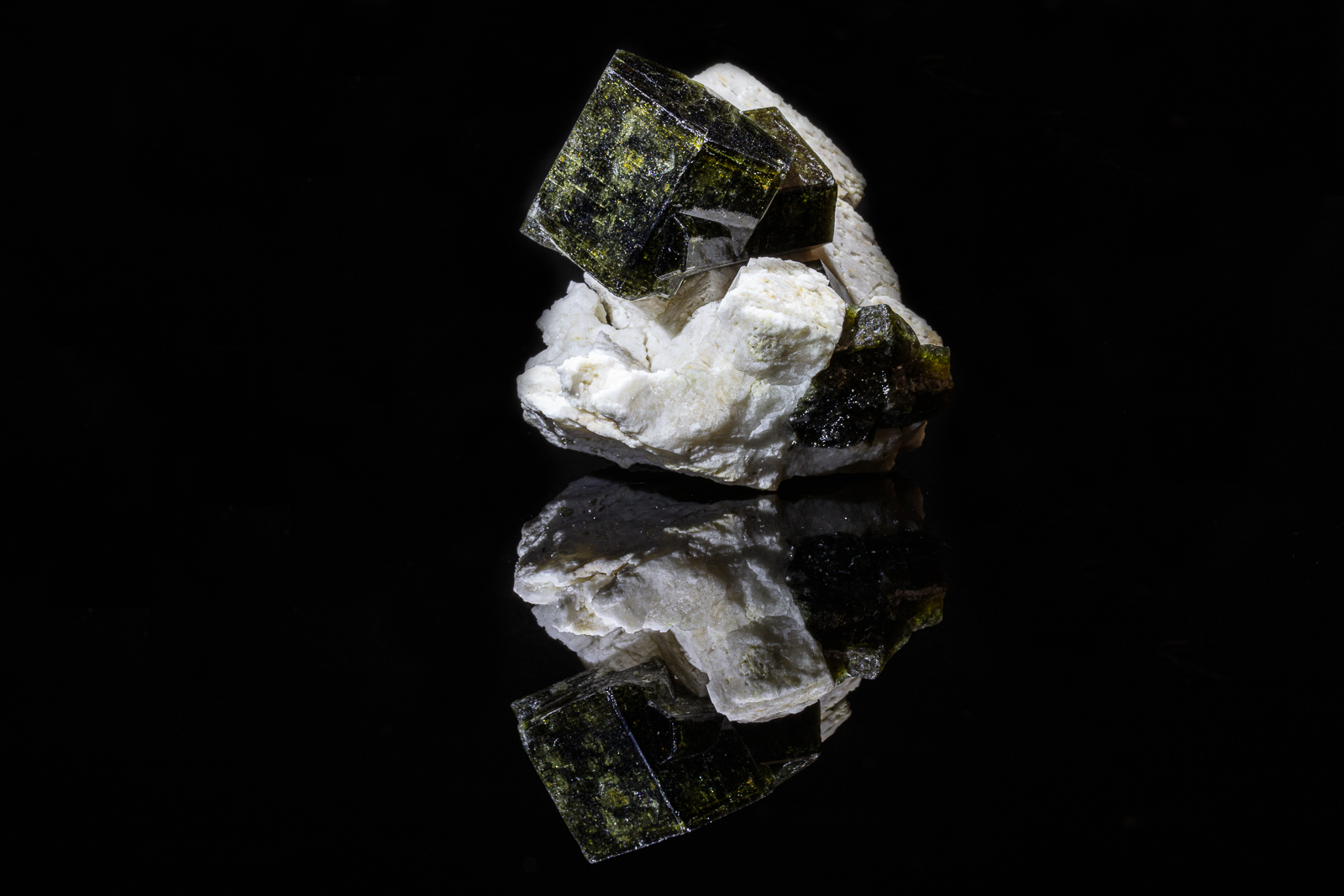Fluorapatite
Formula: Ca5(PO4)3F
Species: Phosphates
Colour: Colourless to white when pure, also green, blue, pink, yellow, brown, violet, purple.
Lustre: Vitreous, Sub-Vitreous, Resinous, Waxy, Greasy
Hardness: 5
Specific Gravity: 3.1 – 3.25
Crystal System: Hexagonal
Member of: Apatite Group > Apatite Supergroup
Name: Renamed in 1860 from the original apatite of Abraham Werner by Carl F. Rammelsberg to emphasize the chemical composition. Apatite is from the Greek ἀπατάω (apatao), to deceive, as apatite was often confused with other minerals (e.g. beryl, milarite). Rammelsberg added the “Fluor-” prefix in allusion to the dominance of fluorine in the composition.
Type Locality: Sauberg Mine, Ehrenfriedersdorf, Erzgebirgskreis, Saxony – Germany
Fluorapatite is by far the most common species in the apatite group. It occurs in almost all igneous rocks, during initial phases of paragenesis, as an accessory mineral, commonly in microscopic crystals, and may occur as very large bodies as late-magmatic segregations in alkaline igneous rocks. Also occurs crystallized in pegmatitic facies of acidic and basic types of igneous rocks. Common in magnetite deposits, and in hydrothermal veins, particularly those formed at high temperatures, and in Alpine cleft-type veins. Fluorapatite may be confused with beryl, milarite or phenakite.

 Copyright Charles Camarda - www.camardavisualstudio.com
Copyright Charles Camarda - www.camardavisualstudio.com